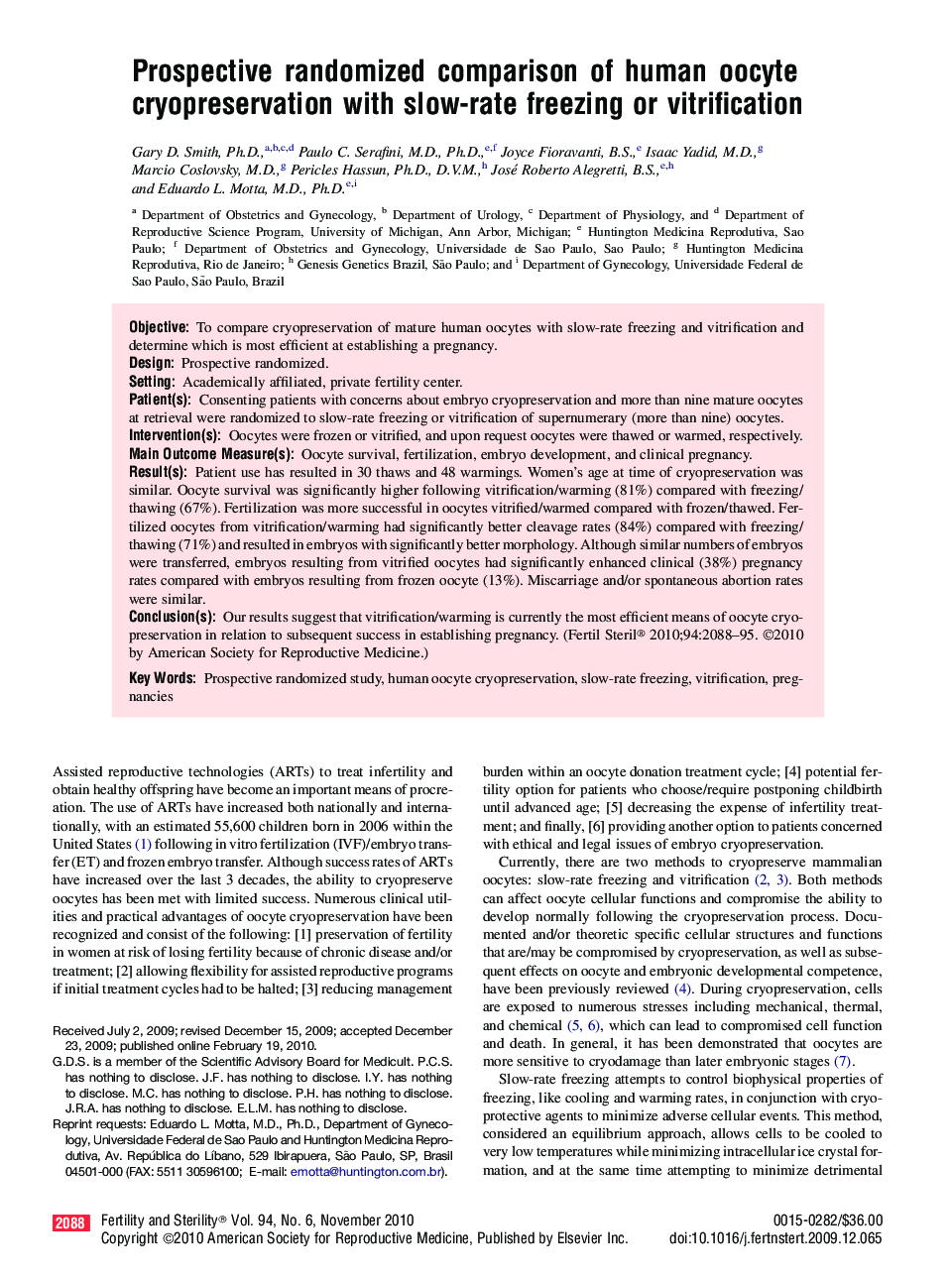| Article ID | Journal | Published Year | Pages | File Type |
|---|---|---|---|---|
| 3932827 | Fertility and Sterility | 2010 | 8 Pages |
ObjectiveTo compare cryopreservation of mature human oocytes with slow-rate freezing and vitrification and determine which is most efficient at establishing a pregnancy.DesignProspective randomized.SettingAcademically affiliated, private fertility center.Patient(s)Consenting patients with concerns about embryo cryopreservation and more than nine mature oocytes at retrieval were randomized to slow-rate freezing or vitrification of supernumerary (more than nine) oocytes.Intervention(s)Oocytes were frozen or vitrified, and upon request oocytes were thawed or warmed, respectively.Main Outcome Measure(s)Oocyte survival, fertilization, embryo development, and clinical pregnancy.Result(s)Patient use has resulted in 30 thaws and 48 warmings. Women's age at time of cryopreservation was similar. Oocyte survival was significantly higher following vitrification/warming (81%) compared with freezing/thawing (67%). Fertilization was more successful in oocytes vitrified/warmed compared with frozen/thawed. Fertilized oocytes from vitrification/warming had significantly better cleavage rates (84%) compared with freezing/thawing (71%) and resulted in embryos with significantly better morphology. Although similar numbers of embryos were transferred, embryos resulting from vitrified oocytes had significantly enhanced clinical (38%) pregnancy rates compared with embryos resulting from frozen oocyte (13%). Miscarriage and/or spontaneous abortion rates were similar.Conclusion(s)Our results suggest that vitrification/warming is currently the most efficient means of oocyte cryopreservation in relation to subsequent success in establishing pregnancy.
